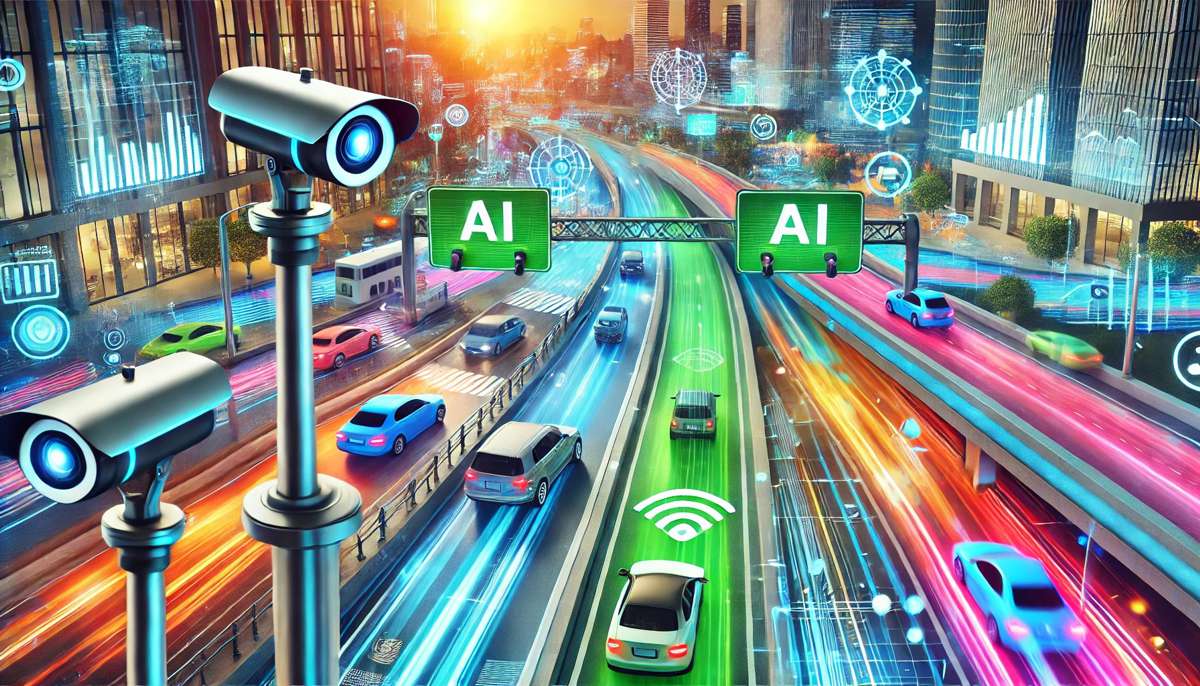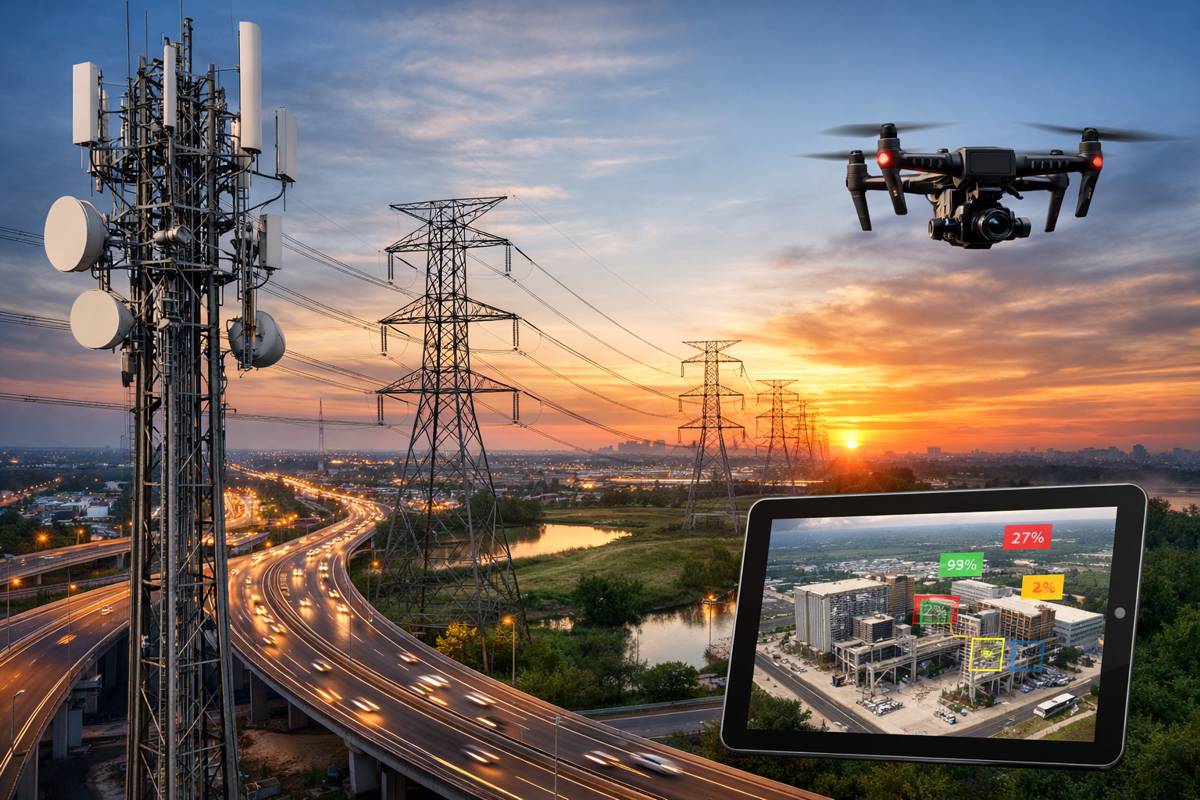The Role of Artificial Intelligence in Transforming Smart Highways
The evolution of smart highways is being fuelled by rapid advancements in artificial intelligence (AI), fundamentally transforming how roads are managed and how vehicles interact with infrastructure.
As the world embraces a future where autonomous vehicles and smart cities are the norm, AI is playing an increasingly central role in making our highways safer, more efficient, and more responsive to changing conditions. From predictive traffic management to real-time hazard detection, AI is reshaping the way we think about transportation.
AI-Powered Traffic Management
One of the most visible impacts of AI on smart highways is in traffic management. Traditional traffic systems rely on fixed timing for traffic lights and basic sensors to monitor congestion, but AI introduces a dynamic, data-driven approach. AI systems, powered by machine learning algorithms, can analyse real-time traffic patterns and predict congestion before it happens.
These systems process data from traffic cameras, GPS in connected vehicles, and road sensors to make informed decisions about traffic light sequences, lane management, and speed limits. For instance, AI can identify areas where bottlenecks are likely to occur and adjust the traffic flow in advance by rerouting vehicles or altering the timing of lights.
This leads to smoother traffic, fewer delays, and a significant reduction in emissions caused by idling vehicles.
AI for Accident Prevention and Hazard Detection
AI’s ability to analyse vast amounts of data in real-time also has major implications for road safety. On smart highways, AI systems can identify hazards, such as stalled vehicles, road debris, or accidents, more quickly than human drivers or traditional systems. Using AI-powered image recognition and sensor data, these systems can instantly alert authorities and vehicles to dangers ahead, enabling faster responses and preventing collisions.
Moreover, AI is revolutionizing how weather-related hazards are managed. In snowy or icy conditions, for example, AI can analyse data from road temperature sensors, cameras, and weather forecasts to automatically adjust road speed limits, activate smart road studs, and alert drivers to potential risks. This level of predictive hazard management is vital in reducing accidents and ensuring that highways remain safe in all conditions.
AI and Autonomous Vehicles
AI is also at the heart of autonomous vehicle technology, and smart highways serve as the perfect environment for these vehicles to thrive. The integration of Vehicle-to-Everything (V2X) communication—where vehicles communicate with other vehicles, road infrastructure, and traffic systems—relies heavily on AI. Smart highways equipped with AI systems can process data from autonomous vehicles, optimizing routes, managing traffic flow, and ensuring that autonomous and human-driven vehicles coexist safely on the same road.
One of the key advantages AI brings to this relationship is its ability to process and act on real-time data from multiple sources. For instance, if an autonomous vehicle encounters an unexpected obstacle, the AI-powered system can quickly communicate this information to nearby vehicles and adjust the traffic flow to prevent accidents. Similarly, AI can help autonomous vehicles adapt to sudden changes in road conditions, such as lane closures or detours, keeping traffic moving smoothly.
AI for Predictive Maintenance
Another critical area where AI is making an impact is predictive maintenance. On smart highways, embedded sensors and cameras collect data on road wear and tear, including cracks, potholes, and infrastructure stress. AI algorithms analyse this data to predict when and where maintenance will be needed, allowing authorities to address issues before they become serious problems.
This proactive approach to maintenance not only improves road safety but also reduces the cost and disruption of emergency repairs. By leveraging AI to predict road degradation, governments and municipalities can extend the lifespan of infrastructure and ensure that roads remain in optimal condition for drivers.
Challenges and Opportunities Ahead
While the integration of AI into smart highways brings numerous benefits, it also poses challenges. One of the primary concerns is the ethical and regulatory framework surrounding AI-driven decisions, particularly in situations involving autonomous vehicles. How AI systems prioritize safety in critical situations, and who is held accountable for AI-driven errors, are important questions that must be addressed.
Additionally, the widespread implementation of AI-powered smart highways requires significant investment in infrastructure, including upgrading road sensors, cameras, and communication networks. However, the long-term benefits—reduced traffic congestion, fewer accidents, and more efficient road maintenance—are likely to outweigh the initial costs.
AI and the Future of Smart Highways
As artificial intelligence continues to evolve, its role in transforming smart highways will only become more pronounced. From predictive traffic management and hazard detection to enhancing the capabilities of autonomous vehicles, AI is driving a new era of innovation in transportation. Smart highways, powered by AI, promise to deliver safer, more efficient, and more sustainable road networks that meet the demands of modern cities and the autonomous future.
By embracing AI-driven technology, we are not only improving the way we drive but also paving the way for a future where intelligent infrastructure will shape the landscape of global transportation. The future of smart highways is here, and AI is at the wheel.




















